business continuity plan
description: the process of creating systems of prevention and recovery to deal with potential threats and significant disruption of business operations
15 results

Chaos Engineering: System Resiliency in Practice
by
Casey Rosenthal
and
Nora Jones
Published 27 Apr 2020
You can try this first with fractional capacity, turning down a portion of network or compute resources in one place while turning an equivalent amount up in another with the expectation that automated load balancing adjusts itself appropriately. Business continuity plans Scenario: A natural disaster strikes at your primary office location; satellite offices must assess impact, attempt to reach those impacted by the disaster, and coordinate normal business operations. Even when a disaster occurs, executive decisions still need to be made and vital business workflows need to remain intact. What are the contingencies for critical approval chains when leadership is unavailable? Emergency spending approvals? Public communications? Legal decisions? Having a well-thought-out business continuity plan (BCP) is merely the first step; you must make sure that employees are aware of this plan and know to follow it in an emergency.
…
Index A above-the-line systems, Putting the Principles into Practice, Conclusion accidental complexity, Accidental Complexity adaptive capacity, Engineering Adaptive Capacity adoptionfour considerations of, Adoption obstacles to, Obstacles to Adoption obtaining management buy-in, Adoption organization-wide progression of, Who Bought into Chaos Engineering organization-wide spread of, How Much of the Organization Participates in Chaos Engineering perquisites to, Prerequisites After phasedefined, Creating Foresight summary of, Hypothesize Agile movement, Economic Pillars of Complexity Applied to Software alerting, Monitoring and alerting Allspaw, John, Human Factors, People in the Loop-Conclusion Alquraan, Ahmed, Fault Injection in the Network Alvaro, Peter, Human Factors, The Substitution Myth, The Experiment Selection Problem (and a Solution)-Conclusion Amazon Web Services (AWS)Christmas Eve 2012 outage, Chaos Monkey Is Born early days of, Management Principles as Code Antifragility, Antifragility application logiccontinuous verification for, Correctness fault injection testing, Fault Injection in Applications mismatch with business logic, Example 1: Mismatch Between Business Logic and Application Logic-Example 1: Mismatch Between Business Logic and Application Logic Aschbacher, Nathan, Evolution, Let’s Get Cyber-Physical-Conclusion automated canaries, Types of CV Systems B backup and restorein older systems, Design Patterns Common in Older Systems security Game Days, Security Game Days Barker, James, Moving your organization forward Beck, Kent, Economic Pillars of Complexity Before phasecognitive interviews, Effectively Partnering Internally-Understand Operating Procedures defined, Creating Foresight discussion of scope, Discuss Scope experiment design, Designing the Experiment-Tool Support for Chaos Experiment Design goal of, Steps of the Chaos Engineering Cycle hypothesis creation, Hypothesize-Hypothesize role determination, Hypothesize summary of, Hypothesize below-the-line systems, Putting the Principles into Practice, Conclusion blind resiliency testing, Blind Resiliency Testing Blue Teams, Security Chaos Engineering and Current Methods bootcamp concept, The hypothesis, All You Need Is Altitude and a Direction bootstrapping, Reboot everything Borg, Scope of Tests at Google “breaking stuff”, Breaking Stuff, Chaos Engineering and Resilience Brooks, Frederick, Confronting Complexity bullwhip effect, Contemplating Complexity bureaucratic organizations, Safely Organizing the Chaos bus factor, People outages business concernsbenefits of collaborative mindset, Open Minds, Open Science, and Open Chaos-Conclusion Chaos Maturity Model (CMM), Chaos Maturity Model-Putting It All Together return on investment (ROI), ROI of Chaos Engineering-Conclusion business continuity plans (BCPs), Business continuity plans business logiccontinuous verification for, Correctness mismatch with application logic, Example 1: Mismatch Between Business Logic and Application Logic-Example 1: Mismatch Between Business Logic and Application Logic C cache inconsistency, Avoid Cache Inconsistency Cahoon, Jason, Principles in Action, Google DiRT: Disaster Recovery Testing-Conclusion call graph tracing, Observability: The Opportunity canary testing, Types of CV Systems capacitycapacity management, Capacity management role in fault tolerance, Getting to Basic Fault Tolerance Capital Oneachievements of, A Capital One Case Study approach to Chaos Engineering at, Principles in Action case studyblind resiliency testing, Blind Resiliency Testing chaos experiments in CI/CD, Chaos Experiments in CI/CD designing experiments, Things to Watch Out for While Designing the Experiment evangelism, Evangelism team structure, Team Structure tooling, Tooling transition to Chaos Engineering, Transition to Chaos Engineering case studies (see use cases) Chaos Automation Platform (ChAP)application of Advanced Principles, The Advanced Principles in ChAP benefits of, ChAP as Continuous Verification demonstrating ROI for, Alternative ROI Example limiting blast radius in, Minimize Blast Radius overview of, Tool Support for Chaos Experiment Design, CV in the Wild: ChAP running experiments, ChAP: Running Experiments selecting experiments, ChAP: Selecting Experiments Chaos Community Day, Community Is Born, The Future of “The Principles” Chaos Engineering (see also Principles of Chaos Engineering)applying to databases, Applying Chaos Engineering-Fault Injection in the Filesystem applying to sociotechnical systems, Humanistic Chaos-If You’re Not Failing, You’re Not Learning benefits of, Safety, Conclusion, Degree of Variation characteristics of, Fast Evolution, The Systemic Perspective, What Chaos Engineering Is-Antifragility conflicting guidance on, Principles in Action, Human Factors core philosophy of, Google DiRT: Disaster Recovery Testing defined, Formalizing the Discipline, What Chaos Engineering Is, Chaos Engineering and Resilience evaluation of, Chaos Maturity Model Failure Mode and Effects Analysis (FMEA) and, FMEA and Chaos Engineering foundational models for, Safety, Economic Pillars of Complexity Applied to Software goals of, Formalizing the Discipline, Breaking Stuff, Chaos Engineering and Resilience, ROI of Chaos Engineering, The Rise of Cyber-Physical Systems history of, Introduction: Birth of Chaos-Fast Evolution Human and Organizational Performance (HOP) and, HOP Meets Chaos Engineering-Chaos Engineering and HOP in Practice in IT and cloud-dominated ecosystems, Let’s Get Cyber-Physical role in complex systems, Setting the Stage, Encountering Complex Systems steps of experimentation, What Chaos Engineering Is, Tooling, Steps of the Chaos Engineering Cycle-Hypothesize team structure, Team Structure Chaos Kong, Going Big, Automation of the platforms Chaos Maturity Model (CMM)Adoption, Adoption-Obstacles to Adoption benefits of, Business Factors, Chaos Maturity Model development of, Chaos Maturity Model mapping the properties, Putting It All Together Sophistication, Sophistication-Automation of the platforms Chaos Monkeyas low-hanging fruit of Chaos Engineering, Vary Real-World Events birth of, Chaos Monkey Is Born, Adoption initial use of, Automation of the platforms popularity of, Why Do We Need Chaos Engineering?
…
Studying the impact of disrupting services hosted in Mountain View inspired many of Google’s original disaster tests but as familiarity (or maybe infamy...) increased, teams interested in increasing their reliability began using company-wide DiRT events as an opportunity to probe their own services in depth. Purely theoretical and tabletop exercises gave way to service owners injecting real, but controlled, failures (adding latency, disabling communication with “noncritical” dependencies, exercising business continuity plans in the absence of key individuals, etc.). Over time, more teams participated and more practical tests were run; as tests grew in scope it became apparent just how much there was to learn about and improve in Google’s overall architecture: unacknowledged hard dependencies, fallback strategies misbehaving, safeguards outright not working, shortcomings in planning small and large that become obvious after the fact but are practically invisible beforehand or that only expose themselves given the “just right” (or wrong, depending on how you look at it) combination of unfortunate conditions.

Asset and Risk Management: Risk Oriented Finance
by
Louis Esch
,
Robert Kieffer
and
Thierry Lopez
Published 28 Nov 2005
. • Optimal distribution of best practices. 14 Asset and Risk Management A calculation of the losses attributable to operational risk therefore provides a framework that allows the controls to be linked to performance measurement and shareholder value. That having been said, this approach to the mastery of operational risk must also allow insurance programmes to be rationalised (concept of risk transfer), in particular by integrating the business continuity plan or BCP into it. 2.1.1.3 The triptych: Operational risk – risk transfer – BCP See Figure 2.1. A. The origin, definition and objective of Business Continuity Planning A BCP is an organised set of provisions aimed at ensuring the survival of an organisation that has suffered a catastrophic event. The concept of BCP originated in the emergency computer recovery plans, which have now been extended to cover the human and material resources essential for ensuring continuity of a business’s activities.
…
Banks should periodically review their risk limitation and control strategies and should adjust their operational risk profile accordingly using appropriate strategies, in light of their overall risk appetite and profile. The seventh principle states that banks should have in place contingency and business continuity plans to ensure their ability to operate on an ongoing basis and limit losses in the event of severe business disruption. Role of supervisors In the eighth principle banking supervisors should require that all banks, regardless of size, have an effective framework in place to identify, assess, monitor and control/mitigate material operational risks as part of an overall approach to risk management.
…
Examples of what an independent evaluation of operational risk by supervisors should review include the following: • The effectiveness of the bank’s risk management process and overall control environment with respect to operational risk; • The bank’s methods for monitoring and reporting its operational risk profile, including data on operational losses and other indicators of potential operational risk; • The bank’s procedures for the timely and effective resolution of operational risk events and vulnerabilities; • The bank’s process of internal controls, reviews and audit to ensure the integrity of the overall operational risk management process; • The effectiveness of the bank’s operational risk mitigation efforts, such as the use of insurance; • The quality and comprehensiveness of the bank’s disaster recovery and business continuity plans; and The Regulatory Context 9 • The bank’s process for assessing overall capital adequacy for operational risk in relation to its risk profile and, if appropriate, its internal capital targets. Role of disclosure Banks should make sufficient public disclosure to allow market participants to assess their approach to operational risk management. 1.3 ACCOUNTING STANDARDS The financial crisis that started in some Asian countries in 1998 and subsequently spread to other locations in the world revealed a need for reliable and transparent financial reporting, so that investors and regulators could take decisions with a full knowledge of the facts. 1.3.1 Standard-setting organisations10 Generally speaking, three main standard-setting organisations are recognised in the field of accounting: • The IASB (International Accounting Standards Board), dealt with below in 1.3.2. • The IFAC (International Federation of Accountants). • The FASB (Financial Accounting Standards Board).

The Trade Lifecycle: Behind the Scenes of the Trading Process (The Wiley Finance Series)
by
Robert P. Baker
Published 4 Oct 2015
Developers must know and understand the faults, users must be aware of any shortcomings and managers need to build testing and fault fixing into their planning. Overall confidence in the system very much depends on good, effective testing. APPENDIX E Organisational Risks M any risks affect the organisation as a whole. BUSINESS CONTINUITY PLANNING (BCP) RISKS An untested BCP plan can jeopardise the business by inducing a false sense of confidence. Linked to this risk is the tendency of many people to undervalue the purpose of BCP. The BCP staff are dependent on IT and business professionals to tell them what is required – if the exercise is not taken seriously key components or activities might be missed.
…
Bob Steiner (2012) Mastering Financial Calculations: A Step-by-step Guide to the Mathematics of Financial Market Instruments, Financial Times/Prentice Hall. 377 Index 30/360 date calculation 350–1 ABSs see asset backed securities abusive behaviour, traders 223 acceptance testing see user acceptance testing accounting 161–9 balance sheet 161–4 financial reports 168–9 profit and loss account 164–8 accrual accrual convention 349–50 accrued profit and loss 165 actual/actual date calculation 350 advisory services 269, 370 aggregation of calculations 342 trades 101–2 agricultural commodities 56 algorithms 184 amendment to a trade 108 American options 29, 66 amortising bonds 47, 48 analytics 271–2 see also quantitative analysts animal products 56 application programming interface (API) 270 architects, IT 187 asset backed securities (ABSs) 47 asset classes 33–59 bonds and credit 46–53 commodities 29, 53–8 equities 44–5 foreign exchange 40–4 interest rates 33–40 and products 17 trade matrix 71–2 trading across 58–9 asset holdings see holdings asset managers 10, 168–9 at-the-money options 66 audit 191–2 average trades, exotic options 68 back book trading 132 back office (operations) 183, 227, 316 back testing 317 back-to-back trades 152 bad data 105, 317–20 balance sheet 161–4 banks culture and conduct 203 interbank systems 158 reasons for trading 9–10 retail banks 222 traders’ internal accounts 123 Barclays Capital 219 barrier options 68 base rate, interest rates 35 Basel II 144 Basel III 205 baskets exotic options 68 FX trades 41–2 BCP see business continuity planning bearer securities 124 Bermudan options 66 bespoke trades 69–70 bid/offer spread 310 binary options 68–9 black box (mathematical library) 238, 241, 270 black box testing 301 Black Scholes formula 346 board of directors 193–4 bond basis deltas 175 379 380 bonds 27, 28, 29, 46–53 coupon payments 47, 48, 106–7 RABOND project case study 225–35 sovereign debt 46 tradeflow issues 49 types 46–7 bonuses 220–1 booking of a trade 85, 93–4 bootstrapping 348–9 boundary testing 351 breaches, dealing with 155–6 breaks, settlement 356–7 brokers 5–6, 10, 75 buckets (time intervals) 148–9 bullying behaviour 223 business continuity planning (BCP) 373 calculation process 337–52 see also valuation process bootstrapping 348–9 calibration to market 351 dates 349–51 example 337–8 mark-to-market value 339–40 model integration 352 net present value 338–9, 343–8 risks 352 sensitivity analysis 347–8 calibration process, valuation 351 call options 62, 63 cancellation of a trade 109 capital adequacy ratio (CAR) 144 case studies 225–52 EcoRisk project 235–47 OTTC equity confirmation project 247–52 RABOND project 225–35 cash balance sheet item 162 exchange dates 86 exercise 111 settlement 98, 99 cashflows American options 30 asset holdings 117–24 bank within a bank 123 consolidated reporting 122 custody of securities 123–4 diversification 122–3 realised and unrealised P&L 122 INDEX reconciliation 121 risks 124 treatment of 119–20 value of 120–1 credit default swaps 31 deposits 23 discount curve 38–9 equity spot trades 26 fixed bonds 27, 28 floating bonds 27, 28 foreign exchange swaps 25 future trades 20–1 loans 22 options 27–30, 345–6 post booking 96–7 risks 367 spot trades 19 swap trades 24 unknown, options valuation 345–6 zero bonds 27, 29 CDSs see credit default swaps Central Counterparty Clearing (CCP) 210–12 change coping with 260–1, 284 to a trade 105–10 clearing 210–12 Cliquet (ratchet options) 68 collateral 108, 153–4, 156, 212–13 COM (common object model) 246 commodities 29, 53–8 cash settlement 99 characteristics 55–6 currency 57 definition 55 example 53–5 localised production 57 OTC commodities 56 physical settlement 57–8 profit curve 54–5 time lag 57 tradeflow issues 58 types 56 utility of 57 common object model (COM) 246 communication 188, 197–8, 254–5, 259–60, 305, 371 competition analysis 269 compliance officers 192–3 confirmation of a trade 94–6, 247–52, 355 conflicts and tensions 196–7, 198–9, 360–1 381 Index consolidated reporting 122 consolidation of processes 283–4 control see also counterparty risk control; market risk control people involved in 189–99, 224 of report generation 335 conversion, currency 344 correlation risk 131, 363 counterparties changes to a trade 108 correlation between 364 identification of 85 Counterparty Clearing, Central 210–12 counterparty risk control 147–60, 364–5 activities of department 154–7, 190–1 collateral 153–4, 156 counterparty identification 153 default consequences 148 limit imposition 152–3 management interface 157 measurement of risk 149–52, 155, 156 non-fulfilment of obligations 147–8 payment systems 158–60 quantitative analyst role 268 risks in analysing credit risk 157–8 settlement 356 time intervals 148–9 coupon payments, bonds 47, 48, 106–7 credit default swaps (CDSs) 30–1, 51–2, 65–6, 175, 209 credit exposure 150–1 credit quantitative analysts 274 credit rating companies 231–2 credit risk see also counterparty risk control; credit default swaps; credit valuation adjustment bonds 46–53 default 51 definition 50 documentation 50–1 market data 316 measurement of 209 recovery rate 52–3 risks in analysing 157–8 types of risk 131 credit valuation adjustment (CVA) 207–13 debt valuation adjustment 209 definition 208 funding valuation adjustment 209 measurement of 208 mitigation 210 netting 211–12 portfolio-based 213 rehypothication 212–13 credit worthiness 51–2, 155 creditors, balance sheet item 163 CreditWatch 232 culture of banks 203 currency conversion 344 exposure to 4 precious metals as 57 reporting currency 42 value of holdings 120–1 currency swaps, foreign exchange 41 current (live) market data 79, 314 curves, market data 310–13 custodians 98, 124 customer loyalty 199 CVA see credit valuation adjustment data 307–25 absence of 368 authentic data 368 back testing 317 bad data 105, 317–20 bid/offer spread 310 corrections to 321–2 data feeds 226 expectations 309–10 extreme values 317 implied data 323 integrity of 322–4 internal data 321 interpolation 319 market data 107–8, 180, 292, 308–17 processes 286 risks 324–5, 367–8 sources of 320–1, 323 storage 309 testing 302 time series analysis 320 types of 308–10 validity of 307 vendors 321 data cleaning 320 data discovery 319–20 data engineering 319 databases 250–1, 308 382 dates calculation of 349–51 exercise of trades 111 final settlement 113 internal and external trades 102 relating to a trade 86–7 settlement 101, 113 on trade tickets 102 debt, exposure to 127 debt valuation adjustment (DVA) 209 debtors, balance sheet item 162 default 51, 131, 148 see also credit default swaps delivery versus payment (DvP) 98 delta hedging 133 delta risk 130 deltas 175 deposits 23, 35 derivatives 61–72 see also futures and forwards; options; swaps digital options 68–9 directors, role of 193–4 discount curve, interest rates 38–9 discounting, NPV calculation 343–4, 345 diversification 122–3 dividends 105–6 documentation credit risk 50–1 EcoRisk project case study 240–1 legal documents 84–5 processes 287 risks 356, 374 settlement 98 Dodd–Frank Act 206–7 dreaming ahead 131–2 due diligence 192, 292 duties (fees) 97 DVA (debt valuation adjustment) 209 DVO1, risk measure 138 DvP (delivery versus payment) 98 economic data 84 EcoRisk project, case study 235–47 documentation 240–1 functionality 243–4 Graphical User Interface 237–8 mathematical library 238, 241 solution 238–40 testing 239–40 valuation problem debugging 242–3 INDEX electronic exchanges 6 electronic systems 92 email 92 EMIR (European Markets Infrastructure Regulation) 202–3 employees see people involved in trade lifecycle end of day roll 103, 181–2 end of month reports 182 energy products 56 equal opportunities 219–20 equities 26, 44–5, 247–52 errors confirmation process 95 in data 322 P&L corrections 171 post booking 97 in reports 333–4 European Markets Infrastructure Regulation (EMIR) 202–3 European options 29, 66 exceptions, processes 322 exchange price 75 exchanges 6, 86, 320 execution of a trade 89–93 exercise, option trades 64, 110–12, 357–8 exotic options 67–9, 109, 235–47, 346 expected loss 150 exposure 4, 125–8, 130–2, 150–1, 155, 156 fault logging 302–4 fees 97, 169 finance department 191, 316 financial products 17–31 bonds 27, 28, 29, 46–53, 106–7, 225–35 credit default swaps 30–1, 51–2, 65–6, 175, 209 deposits 23, 35 equities 26, 44–5, 247–52 futures 20–1, 35–6, 40–1, 61, 62, 77, 127, 311, 312 FX swaps 25, 41 loans 21–3 options 27–30, 61–9, 77, 109–12, 127, 235–47, 345–6, 357–8 spot trades 18–19, 40, 127 swaps 23–5, 30–1, 36–7, 41, 107, 312–13 financial reports 168–9 financial services industry 8–10 fixed assets, balance sheet item 161 fixed bonds 27, 28, 47, 48 fixed and floating coupons 127 383 Index fixed for floating swaps 23–4 fixed loans 22 fixing date 86 fixings 107–8 float for fixed/float for float 36 floating bonds 27, 28 floating loans 22 floating rate notes (FRNs) 47 flow diagrams 287 FoP (free of payment) 98 foreign exchange (FX) 40–4 baskets 41–2 FX drift 42–3 reporting currency 42 swaps 25, 41 tradeflow issues 43–4 forward rate agreement (FRA) 37–8 see also futures and forwards free of payment (FoP) 98 FRNs (floating rate notes) 47 front book trading 132 front line support staff 186 front office EcoRisk project, case 235–47 market risk control 142 risks 375–6 fugit 112 fund managers 10 funding valuation adjustment (FVA) 209 futures and forwards 20–1, 35–6, 40–1, 61, 62 gold futures 311, 312 leverage 77 risks 127 FVA (funding valuation adjustment) 209 FX see foreign exchange gamma risk 130 gearing 77–8 gold futures 311, 312 governance 204 Graphical User Interface (GUI) 237–8 hedge funds 10, 168–9, 212–13 hedging strategies 133–4 hedging trades 128 help desks 247 historical market data 314 holdings 117–24 asset types 118 bank within a bank 123 consolidated reporting 122 custody of securities 123–4 diversification 122–3 realised and unrealised P&L 122 reconciliation 121 risks 124 value 120–1 human resources see people involved in trade lifecycle human risks 194–9, 359–61 hybrid trades 69–70 identification details, trades 83–4 illiquid products 140 illiquid trades 339 in person trades 92 in-the-money options 66 incentives 195 industrial metals 56 information technology (IT) architects 187 case studies 225–52 communication 259–60 dependency on 284 EcoRisk project 235–47 equity confirmation project 247–52 infrastructure 186 IT divide 253–66 business functions 255–6 business requirements 261–3 coping with change 260–1 do’s and don’ts 263 IT blockers 258 IT requirements 263–4 misuse of IT 256–7 organisational blockers 257–8 problems caused by 255 project examples 265–6 solution 259–60 language of 254 legacy systems 282 operators 188 project managers 187–8 quality control 260 and quantitative analysts 271–4 RABOND project 225–35 risks 375–6 staff 185–9, 197, 217–18, 253–66 testers 188–9 and traders 258 384 infrastructure, IT 186 instantaneous risk measures 138 insurance 30–1, 50 integration testing 300 interbank systems 158 interbank trading (LIBOR) 39 interest rates 21–3, 33–40 base rate 35 credit effects 39 deltas 175 deposits 35 discount curve 38–9 forward rate agreement 37–8 futures 35–6, 311–12 market participants 34–5 option valuation 67 products 35–8 quantitative analysts 274 swaps 23–5, 36–7 time value of money 33–4 tradeflow issues 39–40 vegas 175 interim delivery of projects 259 internal audit 191–2 International Swaps and Derivatives Association (ISDA) 50 investment banks 9–10 investments, balance sheet item 161 ISDA (International Swaps and Derivatives Association) 50 IT see information technology kappa risk 130 knock in/knock out, barrier options 68 knowledge, risks 359–60 legacy IT systems 282 legal department 189, 293, 316 legal documents 84–5 legal risks 50, 369 leverage 64–6, 76–9 LIBOR (interbank trading) 39 libraries 184–5 lifecycle of a trade see trade lifecycle limit orders 129 limits and credit worthiness 155 imposing 152–3 market risk control 141 line managers 222 INDEX linear derivatives 61, 62 liquidity 73–5, 202, 375 litigation 370 live trading 7 loans 21–3 management see also project management; risk management of changes 109–10 counterparty risk control 157 fees 169 market data usage 317 new products 292 responsibilities of 193–4 risks 374 of teams 229–31 margin payments 156 mark-to-market value 339–40 market data 180, 292, 308–17 business usage 315–17 changes as result of 107–8 curves and surfaces 310–13 sets of 314 market participants 4–5 market risk control 135–45, 190, 363–4 allocation of risk 139 balanced approach 143 controlling the risk 140–1 human factor 143 limitations 142–3 market data usage 316 methodologies 135–9 monitoring of market risk 140 need for risk 139 quantitative analyst role 268 regulatory requirements 143–4 responsibilities 141–2 market sentiment 340 matching of records 94–5 mathematical libraries 238, 241, 270 mathematical models evolution of 343 new products 293 parameters 341 prototypes 238–9 quantitative analyst role 183–5 risks 373 validation team 189–90 maturity of a trade 8, 67, 86, 112–13 MBS see mortgage backed securities 385 Index metal commodities 56, 57 middle office (product control) market data usage 316 new products 293 RABOND project, case study 225–35 role of 180–2 missing data 317 mobile phones 92 models see mathematical models Monte Carlo technique 346–7 mortgage backed securities (MBS) 47 multilateral netting 211–12 NatWest Markets, EcoRisk project 235–47 net present value (NPV) 338–9, 343–8 netting 152, 211–12 new products 289–95 checklist 292–3 evolution of 294 market data 292 market risk control 140 process development/improvement 279–88 risks 194, 294–5, 369 testing 291–2 trial basis for 290–2 new trade types 156 nonlinear derivatives 62–9 nostro accounts 99 NPV see net present value official market data 314 offsetting of risks 128 OIS (overnight indexed swap) 39 operational risks 355–8 operations department 183, 227, 316 operators, IT 188 options 27–30, 61–9 credit default swaps 65–6 exercise 110–12 exotic options 67–9, 109, 235–47, 346 leverage 64–6, 77 risks 127, 357–8 terminology 66 trade process 64–6 valuation 67, 345–6 orders 90–1, 357 OTC see over-the-counter trading OTTC equity confirmation project, case study 247–52 out-of-the-money options 66 over-the-counter (OTC) trading 6–7 clearing 210 commodities 56 price 75 overnight indexed swap (OIS) 39 overnight processes 101–5 P&L see profit and loss parallel testing 301 pay 203, 220–1 payment systems 106–7, 158–60, 357 pension funds 10 people involved in trade lifecycle 177–200 see also working in capital markets back office 183, 227, 316 compliance officers 192–3 conflicts and tensions 196–9, 360–1 control functions 189–99 counterparty risk control department 190–1 finance department 191, 316 human risks 194–9 information technology 185–9, 197, 217–18, 253–66 internal audit 191–2 legal department 189, 293, 316 line managers 222 management 193–4 market risk control department 190 middle office 180–2, 225–35, 293, 316 model validation team 189–90 personality and outlook 194–5, 244–5, 273 programmers 187, 244–5 quantitative analysts 183–5, 267–75 researchers 179–80 revenue generation 177–89 sales department 179, 227, 315, 375 senior managers 126 staffing levels 195 structurers 179 supervisors 204 testers 298–9 traders 125–6, 177–8, 218–23, 226–7, 258, 268, 315, 361 trading assistants 178 trading managers 126, 193 training of staff 193 performance reports 169 personality and outlook 194–5, 244–5, 273 PFE (potential future exposure) 151 physical assets, exercise 111 386 physical commodities, settlement 57–8, 99 planning of processes 282–3 recovery plans 203–4 risks 360 post booking processes 96–7 postal trades 92–3 potential future exposure (PFE) 151 power, abuses of 220, 221–2 pre-execution of a trade 89–91 precious metals 56, 311, 312 premiums 31 price 75–6, 138–9 pricing methods EcoRisk project, case study 235–47 short-term pricing 183 process development/improvement 279–88 coping with change 284 current processes 285–7 evolution of processes 280–1 improving the situation 284–7 inertia 287–8 inventory of current systems 282–4 planning 282–3 timing 288 producers 5 product appetite 4 product control see middle office product development see new products profit curve, commodity trading 54–5 profit and loss (P&L) accounts 164–8 accrued and incidental 165 example 165–6 individual trades 166–7 realised and unrealised 165 responsibility for producing 167 risks associated with reporting 167–8 rogue trading 168 attribution reports 171–6 benefits of 171–2 example 173–6 market movements 173, 175 process 172–3 unexplained differences 173 balance sheet item 163 end of day 182 realised and unrealised 122, 165 programmers 187, 244–5 see also quantitative analysts INDEX project management 225–47, 259, 262 project managers 187–8 proprietary (‘prop’) trading 203 prototypes, IT projects 238–9 provisional trades 89–90, 357–8 put options 62, 63 PVO1, risk measure 138 quality control, IT 260 see also testing quantitative analysts (quants) 183–5, 267–75 and IT professionals 271–4 role of 267–9, 270 seating arrangements 270–1 working methods 269–70 RABOND project, case study 225–35 management 229–31 outcome 233–5 reports 227–9 team management 229–31 traders 226–7 random market data 314 rapid application development (RAD) 260, 281 ratchet options (Cliquet) 68 ratings companies 231–2 raw data 323 raw reporting 331 real world of capital markets see working in capital markets realised P&L 122 receipts 156 reconciliation 121 recovery plans 203–4 recovery rates 52–3, 176 redundancy, processes 282 reform of banks 203 registered securities 123–4 regression testing 302 regulation 201–13, 223–4 authorities 202 Basel II and III 144, 205 credit valuation adjustment 207–13 external 192 internal 224 market risk control 143–4 new products 293 problems 204–5 requirements 202–4 387 Index risk-weighted assets 205–7 risks 369 rehypothication 212–13 remuneration 203, 220–1 reporting currency 42 reports 327–36 accuracy 330–1, 368 calculation process 342 configuration 331–2 consolidated reporting 122 content 328–9 control issues 335 dimensions 333 distribution 329–30, 335, 369 dynamic reports 332–3 end of month reports 182 enhancements 335 errors in 333–4 false reporting 375 financial reports 168–9 frame of reference 333 middle office role 180–1 OTTC equity confirmation project 250, 251 performance reports 169 presentation 329 problems 333–4 profit and loss 167, 171–6 RABOND project 227–9 raw reporting 331 readership 328, 329, 368–9 redundancy of 334–5 requirements 328–33 risks 335–6, 368–70 security issues 335, 368 timing 330 types of 330 reputation, risk to 356, 370 research 268, 375 researchers 179–80 reserve accounts 141 reset date 86 resettable strike, exotic options 68 retail banks 222 revenue generation, people involved in 177–89 rho risk 130 risk 13–16 see also counterparty risk control; market risk control advisory services 370 appetite for 4 business continuity planning 373 calculation process 352 cashflows 124, 367 changes to a trade 110 communication 371 confirmation 95–6, 355 control departments 224 correlation 363 data 324–5, 367–8 definition 13 documentation 356, 374 exercise 112 front office 375–6 human risks 194–9, 359–61 information technology 375–6 instantaneous measures 138 legal risks 369 liquidity 74–5, 375 litigation 370 management risks 374 measures 130, 138, 149–52, 155, 156 model approval 373 new products 140, 194, 294–5, 369 operational risks 355–8 orders 91 origin of risks 126–8 payment systems 357 provisional trades 90, 357–8 quantifying 14 regulation 369 reports 335–6, 368–70 reputation 356, 370 risk-weighted assets 205–7 sales 375 settlement 100, 355–7 short-term thinking 360 straight through processing 357 support activities 376 systematic 202–3, 375–6 testing 304–5, 370–1 types 130–2 unexpected charges 356 unforeseen 16, 353 valuation process 352, 373 risk management 13, 15, 125–34 in absence of trader 128–9 dreaming ahead 131–2 EcoRisk project case study 235–47 hedging strategies 133–4 hedging trades 128 388 risk management (continued) offsetting of risks 128 senior managers 126 traders 125–6, 361 trading managers 126 trading strategies 132 rogue trading 168 sales data 84 sales department 179, 227, 315, 375 SBC Warburg, equity confirmation project, case study 247–52 scenario analysis 136, 198–9, 341 scope creep 187, 264 scrutiny of trades 96 securities, custody of 123–4 security issues 181, 335, 368 semi-static data 309 senior managers 126 sensitivity analysis 138, 347–8 settlement 97–101, 147–8 breaks 101, 356–7 commodities 99 dates 101, 113 nostro accounts 99 quick settlement 101 risks 100, 355–7 shares 44–5 see also equities short selling 65 short-term pricing 183 short-term thinking 195–6, 360 silo approach 257 simple products 70–1 smoke testing 301 sovereign debt 46 speculators 5 spot prices 61, 62, 63, 67, 76–7 spot testing 301 spot trades 18–19, 40, 127 spread of bid/offer 310 spreadsheets 184, 238 staff see people involved in trade lifecycle stale data 105, 318 Standard & Poor’s (S&P) ratings 231–2 static data 309 stop-loss hedging 133–4 stop orders 129 storage of data 309 straight through processing (STP) 93–4, 357 INDEX stress, staff 222, 244–5 stress testing 302 strike price, options 67 structured trades 69–70 structurers 179 supervisors 204 support activities, risks 376 surfaces, market data 310–13 swaps credit default 30–1, 51–2, 65–6, 175, 209 fixings 107 foreign exchange 25, 41 interest rate 23–5, 36–7 yield curves 312–13 swaptions 66 synthetic equities (index) 45 systems see also information technology amalgamation 104–5 analytics 271–2 electronic systems 92 integrated 261 legacy IT systems 282 risks 375–6 testing 251–2, 300 tail behaviour, predicting 143, 364 team management 229–31 telephone transactions 91–2 tensions and conflicts 196–9, 360–1 testing 297–305 back testing 317 boundary testing 351 extreme values 352 fault logging 302–4 importance of 298 mathematical models 239 new products 291–2 risks 304–5, 370–1 stages 300–1 testers 188–9, 298–9 types of 301–2 unit testing 300 user acceptance testing 237, 239–40, 252, 264, 301 when to perform 299–300 theft 355 theta risk 130 time intervals (buckets) 148–9 time lag, commodities 57 389 Index time series analysis 320 timeline of a trade 79, 86–7 trade blotters 93 trade lifecycle 89–115 booking 93–4 business functions 11 changes during lifetime 105–10 confirmation 94–6 equity trades 45 example trade 113–15 execution 91–3 exercise 110–12 maturity 112–13 new products 293 overnight processes 101–5 post booking 96–7 pre execution 89–91 settlement 97–101 trade tickets 102 trade/trading 3–12 see also trade lifecycle anatomy 83–7 business functions 11 complicated trades 340 consequences of 7–8 definition 10–12 financial products 17–31 live trading 7 matching of records 94–5 policies 8 reasons for 3, 9–10 timeline 79, 86–7 transactions 5–7 types 132 tradeflow issues bonds 49 commodities 58 foreign exchange 43–4 interest rates 39–40 traders 177–8, 218–22, 223, 226–7, 258, 268 bonuses 220–1 market data usage 315 risk management 125–6, 361 trading assistants 178 trading desks 70–1, 256–7 trading floor 217–18, 235–6 trading managers 126, 193 training of staff 193 tranche correlation 131 treasury desk 71 trials for new products 290–2 trust 197, 222 UAT see user acceptance testing underlying 83 unexplained differences, P&L reports 173 unforeseen risk 16, 353 unit testing 300 unknown cashflows 345–6 unrealised P&L 122 unwinding a trade, cost of 76 user acceptance testing (UAT) 237, 239–40, 252, 264, 301 validation of models 189–90 valuation process see also calculation process calibration to market 351 mark-to-market value calculation 339–40 middle office role 181 NPV calculation 338–9, 343–8 options 67 problem debugging 242–3 risks 352, 364, 373 valuation systems 269 value at risk (VaR) 136–8, 341 vega (kappa) risk 130 vegas 175 vendors, data services 321 volatility 67, 130 volume of a trade, price effect 76 white box testing 301 workarounds 303 working in capital markets 217–24 see also case studies; people involved in trade lifecycle in 1990s 217–19 culture clashes 219 equal opportunities 219–20 office politics 220–2, 246 positive/negative aspects 222–3 yield curves 312–13 zero bonds 27, 29, 47 Index compiled by Indexing Specialists (UK) Ltd WILEY END USER LICENSE AGREEMENT Go to www.wiley.com/go/eula to access Wiley’s ebook EULA.
…
Bob Steiner (2012) Mastering Financial Calculations: A Step-by-step Guide to the Mathematics of Financial Market Instruments, Financial Times/Prentice Hall. 377 Index 30/360 date calculation 350–1 ABSs see asset backed securities abusive behaviour, traders 223 acceptance testing see user acceptance testing accounting 161–9 balance sheet 161–4 financial reports 168–9 profit and loss account 164–8 accrual accrual convention 349–50 accrued profit and loss 165 actual/actual date calculation 350 advisory services 269, 370 aggregation of calculations 342 trades 101–2 agricultural commodities 56 algorithms 184 amendment to a trade 108 American options 29, 66 amortising bonds 47, 48 analytics 271–2 see also quantitative analysts animal products 56 application programming interface (API) 270 architects, IT 187 asset backed securities (ABSs) 47 asset classes 33–59 bonds and credit 46–53 commodities 29, 53–8 equities 44–5 foreign exchange 40–4 interest rates 33–40 and products 17 trade matrix 71–2 trading across 58–9 asset holdings see holdings asset managers 10, 168–9 at-the-money options 66 audit 191–2 average trades, exotic options 68 back book trading 132 back office (operations) 183, 227, 316 back testing 317 back-to-back trades 152 bad data 105, 317–20 balance sheet 161–4 banks culture and conduct 203 interbank systems 158 reasons for trading 9–10 retail banks 222 traders’ internal accounts 123 Barclays Capital 219 barrier options 68 base rate, interest rates 35 Basel II 144 Basel III 205 baskets exotic options 68 FX trades 41–2 BCP see business continuity planning bearer securities 124 Bermudan options 66 bespoke trades 69–70 bid/offer spread 310 binary options 68–9 black box (mathematical library) 238, 241, 270 black box testing 301 Black Scholes formula 346 board of directors 193–4 bond basis deltas 175 379 380 bonds 27, 28, 29, 46–53 coupon payments 47, 48, 106–7 RABOND project case study 225–35 sovereign debt 46 tradeflow issues 49 types 46–7 bonuses 220–1 booking of a trade 85, 93–4 bootstrapping 348–9 boundary testing 351 breaches, dealing with 155–6 breaks, settlement 356–7 brokers 5–6, 10, 75 buckets (time intervals) 148–9 bullying behaviour 223 business continuity planning (BCP) 373 calculation process 337–52 see also valuation process bootstrapping 348–9 calibration to market 351 dates 349–51 example 337–8 mark-to-market value 339–40 model integration 352 net present value 338–9, 343–8 risks 352 sensitivity analysis 347–8 calibration process, valuation 351 call options 62, 63 cancellation of a trade 109 capital adequacy ratio (CAR) 144 case studies 225–52 EcoRisk project 235–47 OTTC equity confirmation project 247–52 RABOND project 225–35 cash balance sheet item 162 exchange dates 86 exercise 111 settlement 98, 99 cashflows American options 30 asset holdings 117–24 bank within a bank 123 consolidated reporting 122 custody of securities 123–4 diversification 122–3 realised and unrealised P&L 122 INDEX reconciliation 121 risks 124 treatment of 119–20 value of 120–1 credit default swaps 31 deposits 23 discount curve 38–9 equity spot trades 26 fixed bonds 27, 28 floating bonds 27, 28 foreign exchange swaps 25 future trades 20–1 loans 22 options 27–30, 345–6 post booking 96–7 risks 367 spot trades 19 swap trades 24 unknown, options valuation 345–6 zero bonds 27, 29 CDSs see credit default swaps Central Counterparty Clearing (CCP) 210–12 change coping with 260–1, 284 to a trade 105–10 clearing 210–12 Cliquet (ratchet options) 68 collateral 108, 153–4, 156, 212–13 COM (common object model) 246 commodities 29, 53–8 cash settlement 99 characteristics 55–6 currency 57 definition 55 example 53–5 localised production 57 OTC commodities 56 physical settlement 57–8 profit curve 54–5 time lag 57 tradeflow issues 58 types 56 utility of 57 common object model (COM) 246 communication 188, 197–8, 254–5, 259–60, 305, 371 competition analysis 269 compliance officers 192–3 confirmation of a trade 94–6, 247–52, 355 conflicts and tensions 196–7, 198–9, 360–1 381 Index consolidated reporting 122 consolidation of processes 283–4 control see also counterparty risk control; market risk control people involved in 189–99, 224 of report generation 335 conversion, currency 344 correlation risk 131, 363 counterparties changes to a trade 108 correlation between 364 identification of 85 Counterparty Clearing, Central 210–12 counterparty risk control 147–60, 364–5 activities of department 154–7, 190–1 collateral 153–4, 156 counterparty identification 153 default consequences 148 limit imposition 152–3 management interface 157 measurement of risk 149–52, 155, 156 non-fulfilment of obligations 147–8 payment systems 158–60 quantitative analyst role 268 risks in analysing credit risk 157–8 settlement 356 time intervals 148–9 coupon payments, bonds 47, 48, 106–7 credit default swaps (CDSs) 30–1, 51–2, 65–6, 175, 209 credit exposure 150–1 credit quantitative analysts 274 credit rating companies 231–2 credit risk see also counterparty risk control; credit default swaps; credit valuation adjustment bonds 46–53 default 51 definition 50 documentation 50–1 market data 316 measurement of 209 recovery rate 52–3 risks in analysing 157–8 types of risk 131 credit valuation adjustment (CVA) 207–13 debt valuation adjustment 209 definition 208 funding valuation adjustment 209 measurement of 208 mitigation 210 netting 211–12 portfolio-based 213 rehypothication 212–13 credit worthiness 51–2, 155 creditors, balance sheet item 163 CreditWatch 232 culture of banks 203 currency conversion 344 exposure to 4 precious metals as 57 reporting currency 42 value of holdings 120–1 currency swaps, foreign exchange 41 current (live) market data 79, 314 curves, market data 310–13 custodians 98, 124 customer loyalty 199 CVA see credit valuation adjustment data 307–25 absence of 368 authentic data 368 back testing 317 bad data 105, 317–20 bid/offer spread 310 corrections to 321–2 data feeds 226 expectations 309–10 extreme values 317 implied data 323 integrity of 322–4 internal data 321 interpolation 319 market data 107–8, 180, 292, 308–17 processes 286 risks 324–5, 367–8 sources of 320–1, 323 storage 309 testing 302 time series analysis 320 types of 308–10 validity of 307 vendors 321 data cleaning 320 data discovery 319–20 data engineering 319 databases 250–1, 308 382 dates calculation of 349–51 exercise of trades 111 final settlement 113 internal and external trades 102 relating to a trade 86–7 settlement 101, 113 on trade tickets 102 debt, exposure to 127 debt valuation adjustment (DVA) 209 debtors, balance sheet item 162 default 51, 131, 148 see also credit default swaps delivery versus payment (DvP) 98 delta hedging 133 delta risk 130 deltas 175 deposits 23, 35 derivatives 61–72 see also futures and forwards; options; swaps digital options 68–9 directors, role of 193–4 discount curve, interest rates 38–9 discounting, NPV calculation 343–4, 345 diversification 122–3 dividends 105–6 documentation credit risk 50–1 EcoRisk project case study 240–1 legal documents 84–5 processes 287 risks 356, 374 settlement 98 Dodd–Frank Act 206–7 dreaming ahead 131–2 due diligence 192, 292 duties (fees) 97 DVA (debt valuation adjustment) 209 DVO1, risk measure 138 DvP (delivery versus payment) 98 economic data 84 EcoRisk project, case study 235–47 documentation 240–1 functionality 243–4 Graphical User Interface 237–8 mathematical library 238, 241 solution 238–40 testing 239–40 valuation problem debugging 242–3 INDEX electronic exchanges 6 electronic systems 92 email 92 EMIR (European Markets Infrastructure Regulation) 202–3 employees see people involved in trade lifecycle end of day roll 103, 181–2 end of month reports 182 energy products 56 equal opportunities 219–20 equities 26, 44–5, 247–52 errors confirmation process 95 in data 322 P&L corrections 171 post booking 97 in reports 333–4 European Markets Infrastructure Regulation (EMIR) 202–3 European options 29, 66 exceptions, processes 322 exchange price 75 exchanges 6, 86, 320 execution of a trade 89–93 exercise, option trades 64, 110–12, 357–8 exotic options 67–9, 109, 235–47, 346 expected loss 150 exposure 4, 125–8, 130–2, 150–1, 155, 156 fault logging 302–4 fees 97, 169 finance department 191, 316 financial products 17–31 bonds 27, 28, 29, 46–53, 106–7, 225–35 credit default swaps 30–1, 51–2, 65–6, 175, 209 deposits 23, 35 equities 26, 44–5, 247–52 futures 20–1, 35–6, 40–1, 61, 62, 77, 127, 311, 312 FX swaps 25, 41 loans 21–3 options 27–30, 61–9, 77, 109–12, 127, 235–47, 345–6, 357–8 spot trades 18–19, 40, 127 swaps 23–5, 30–1, 36–7, 41, 107, 312–13 financial reports 168–9 financial services industry 8–10 fixed assets, balance sheet item 161 fixed bonds 27, 28, 47, 48 fixed and floating coupons 127 383 Index fixed for floating swaps 23–4 fixed loans 22 fixing date 86 fixings 107–8 float for fixed/float for float 36 floating bonds 27, 28 floating loans 22 floating rate notes (FRNs) 47 flow diagrams 287 FoP (free of payment) 98 foreign exchange (FX) 40–4 baskets 41–2 FX drift 42–3 reporting currency 42 swaps 25, 41 tradeflow issues 43–4 forward rate agreement (FRA) 37–8 see also futures and forwards free of payment (FoP) 98 FRNs (floating rate notes) 47 front book trading 132 front line support staff 186 front office EcoRisk project, case 235–47 market risk control 142 risks 375–6 fugit 112 fund managers 10 funding valuation adjustment (FVA) 209 futures and forwards 20–1, 35–6, 40–1, 61, 62 gold futures 311, 312 leverage 77 risks 127 FVA (funding valuation adjustment) 209 FX see foreign exchange gamma risk 130 gearing 77–8 gold futures 311, 312 governance 204 Graphical User Interface (GUI) 237–8 hedge funds 10, 168–9, 212–13 hedging strategies 133–4 hedging trades 128 help desks 247 historical market data 314 holdings 117–24 asset types 118 bank within a bank 123 consolidated reporting 122 custody of securities 123–4 diversification 122–3 realised and unrealised P&L 122 reconciliation 121 risks 124 value 120–1 human resources see people involved in trade lifecycle human risks 194–9, 359–61 hybrid trades 69–70 identification details, trades 83–4 illiquid products 140 illiquid trades 339 in person trades 92 in-the-money options 66 incentives 195 industrial metals 56 information technology (IT) architects 187 case studies 225–52 communication 259–60 dependency on 284 EcoRisk project 235–47 equity confirmation project 247–52 infrastructure 186 IT divide 253–66 business functions 255–6 business requirements 261–3 coping with change 260–1 do’s and don’ts 263 IT blockers 258 IT requirements 263–4 misuse of IT 256–7 organisational blockers 257–8 problems caused by 255 project examples 265–6 solution 259–60 language of 254 legacy systems 282 operators 188 project managers 187–8 quality control 260 and quantitative analysts 271–4 RABOND project 225–35 risks 375–6 staff 185–9, 197, 217–18, 253–66 testers 188–9 and traders 258 384 infrastructure, IT 186 instantaneous risk measures 138 insurance 30–1, 50 integration testing 300 interbank systems 158 interbank trading (LIBOR) 39 interest rates 21–3, 33–40 base rate 35 credit effects 39 deltas 175 deposits 35 discount curve 38–9 forward rate agreement 37–8 futures 35–6, 311–12 market participants 34–5 option valuation 67 products 35–8 quantitative analysts 274 swaps 23–5, 36–7 time value of money 33–4 tradeflow issues 39–40 vegas 175 interim delivery of projects 259 internal audit 191–2 International Swaps and Derivatives Association (ISDA) 50 investment banks 9–10 investments, balance sheet item 161 ISDA (International Swaps and Derivatives Association) 50 IT see information technology kappa risk 130 knock in/knock out, barrier options 68 knowledge, risks 359–60 legacy IT systems 282 legal department 189, 293, 316 legal documents 84–5 legal risks 50, 369 leverage 64–6, 76–9 LIBOR (interbank trading) 39 libraries 184–5 lifecycle of a trade see trade lifecycle limit orders 129 limits and credit worthiness 155 imposing 152–3 market risk control 141 line managers 222 INDEX linear derivatives 61, 62 liquidity 73–5, 202, 375 litigation 370 live trading 7 loans 21–3 management see also project management; risk management of changes 109–10 counterparty risk control 157 fees 169 market data usage 317 new products 292 responsibilities of 193–4 risks 374 of teams 229–31 margin payments 156 mark-to-market value 339–40 market data 180, 292, 308–17 business usage 315–17 changes as result of 107–8 curves and surfaces 310–13 sets of 314 market participants 4–5 market risk control 135–45, 190, 363–4 allocation of risk 139 balanced approach 143 controlling the risk 140–1 human factor 143 limitations 142–3 market data usage 316 methodologies 135–9 monitoring of market risk 140 need for risk 139 quantitative analyst role 268 regulatory requirements 143–4 responsibilities 141–2 market sentiment 340 matching of records 94–5 mathematical libraries 238, 241, 270 mathematical models evolution of 343 new products 293 parameters 341 prototypes 238–9 quantitative analyst role 183–5 risks 373 validation team 189–90 maturity of a trade 8, 67, 86, 112–13 MBS see mortgage backed securities 385 Index metal commodities 56, 57 middle office (product control) market data usage 316 new products 293 RABOND project, case study 225–35 role of 180–2 missing data 317 mobile phones 92 models see mathematical models Monte Carlo technique 346–7 mortgage backed securities (MBS) 47 multilateral netting 211–12 NatWest Markets, EcoRisk project 235–47 net present value (NPV) 338–9, 343–8 netting 152, 211–12 new products 289–95 checklist 292–3 evolution of 294 market data 292 market risk control 140 process development/improvement 279–88 risks 194, 294–5, 369 testing 291–2 trial basis for 290–2 new trade types 156 nonlinear derivatives 62–9 nostro accounts 99 NPV see net present value official market data 314 offsetting of risks 128 OIS (overnight indexed swap) 39 operational risks 355–8 operations department 183, 227, 316 operators, IT 188 options 27–30, 61–9 credit default swaps 65–6 exercise 110–12 exotic options 67–9, 109, 235–47, 346 leverage 64–6, 77 risks 127, 357–8 terminology 66 trade process 64–6 valuation 67, 345–6 orders 90–1, 357 OTC see over-the-counter trading OTTC equity confirmation project, case study 247–52 out-of-the-money options 66 over-the-counter (OTC) trading 6–7 clearing 210 commodities 56 price 75 overnight indexed swap (OIS) 39 overnight processes 101–5 P&L see profit and loss parallel testing 301 pay 203, 220–1 payment systems 106–7, 158–60, 357 pension funds 10 people involved in trade lifecycle 177–200 see also working in capital markets back office 183, 227, 316 compliance officers 192–3 conflicts and tensions 196–9, 360–1 control functions 189–99 counterparty risk control department 190–1 finance department 191, 316 human risks 194–9 information technology 185–9, 197, 217–18, 253–66 internal audit 191–2 legal department 189, 293, 316 line managers 222 management 193–4 market risk control department 190 middle office 180–2, 225–35, 293, 316 model validation team 189–90 personality and outlook 194–5, 244–5, 273 programmers 187, 244–5 quantitative analysts 183–5, 267–75 researchers 179–80 revenue generation 177–89 sales department 179, 227, 315, 375 senior managers 126 staffing levels 195 structurers 179 supervisors 204 testers 298–9 traders 125–6, 177–8, 218–23, 226–7, 258, 268, 315, 361 trading assistants 178 trading managers 126, 193 training of staff 193 performance reports 169 personality and outlook 194–5, 244–5, 273 PFE (potential future exposure) 151 physical assets, exercise 111 386 physical commodities, settlement 57–8, 99 planning of processes 282–3 recovery plans 203–4 risks 360 post booking processes 96–7 postal trades 92–3 potential future exposure (PFE) 151 power, abuses of 220, 221–2 pre-execution of a trade 89–91 precious metals 56, 311, 312 premiums 31 price 75–6, 138–9 pricing methods EcoRisk project, case study 235–47 short-term pricing 183 process development/improvement 279–88 coping with change 284 current processes 285–7 evolution of processes 280–1 improving the situation 284–7 inertia 287–8 inventory of current systems 282–4 planning 282–3 timing 288 producers 5 product appetite 4 product control see middle office product development see new products profit curve, commodity trading 54–5 profit and loss (P&L) accounts 164–8 accrued and incidental 165 example 165–6 individual trades 166–7 realised and unrealised 165 responsibility for producing 167 risks associated with reporting 167–8 rogue trading 168 attribution reports 171–6 benefits of 171–2 example 173–6 market movements 173, 175 process 172–3 unexplained differences 173 balance sheet item 163 end of day 182 realised and unrealised 122, 165 programmers 187, 244–5 see also quantitative analysts INDEX project management 225–47, 259, 262 project managers 187–8 proprietary (‘prop’) trading 203 prototypes, IT projects 238–9 provisional trades 89–90, 357–8 put options 62, 63 PVO1, risk measure 138 quality control, IT 260 see also testing quantitative analysts (quants) 183–5, 267–75 and IT professionals 271–4 role of 267–9, 270 seating arrangements 270–1 working methods 269–70 RABOND project, case study 225–35 management 229–31 outcome 233–5 reports 227–9 team management 229–31 traders 226–7 random market data 314 rapid application development (RAD) 260, 281 ratchet options (Cliquet) 68 ratings companies 231–2 raw data 323 raw reporting 331 real world of capital markets see working in capital markets realised P&L 122 receipts 156 reconciliation 121 recovery plans 203–4 recovery rates 52–3, 176 redundancy, processes 282 reform of banks 203 registered securities 123–4 regression testing 302 regulation 201–13, 223–4 authorities 202 Basel II and III 144, 205 credit valuation adjustment 207–13 external 192 internal 224 market risk control 143–4 new products 293 problems 204–5 requirements 202–4 387 Index risk-weighted assets 205–7 risks 369 rehypothication 212–13 remuneration 203, 220–1 reporting currency 42 reports 327–36 accuracy 330–1, 368 calculation process 342 configuration 331–2 consolidated reporting 122 content 328–9 control issues 335 dimensions 333 distribution 329–30, 335, 369 dynamic reports 332–3 end of month reports 182 enhancements 335 errors in 333–4 false reporting 375 financial reports 168–9 frame of reference 333 middle office role 180–1 OTTC equity confirmation project 250, 251 performance reports 169 presentation 329 problems 333–4 profit and loss 167, 171–6 RABOND project 227–9 raw reporting 331 readership 328, 329, 368–9 redundancy of 334–5 requirements 328–33 risks 335–6, 368–70 security issues 335, 368 timing 330 types of 330 reputation, risk to 356, 370 research 268, 375 researchers 179–80 reserve accounts 141 reset date 86 resettable strike, exotic options 68 retail banks 222 revenue generation, people involved in 177–89 rho risk 130 risk 13–16 see also counterparty risk control; market risk control advisory services 370 appetite for 4 business continuity planning 373 calculation process 352 cashflows 124, 367 changes to a trade 110 communication 371 confirmation 95–6, 355 control departments 224 correlation 363 data 324–5, 367–8 definition 13 documentation 356, 374 exercise 112 front office 375–6 human risks 194–9, 359–61 information technology 375–6 instantaneous measures 138 legal risks 369 liquidity 74–5, 375 litigation 370 management risks 374 measures 130, 138, 149–52, 155, 156 model approval 373 new products 140, 194, 294–5, 369 operational risks 355–8 orders 91 origin of risks 126–8 payment systems 357 provisional trades 90, 357–8 quantifying 14 regulation 369 reports 335–6, 368–70 reputation 356, 370 risk-weighted assets 205–7 sales 375 settlement 100, 355–7 short-term thinking 360 straight through processing 357 support activities 376 systematic 202–3, 375–6 testing 304–5, 370–1 types 130–2 unexpected charges 356 unforeseen 16, 353 valuation process 352, 373 risk management 13, 15, 125–34 in absence of trader 128–9 dreaming ahead 131–2 EcoRisk project case study 235–47 hedging strategies 133–4 hedging trades 128 388 risk management (continued) offsetting of risks 128 senior managers 126 traders 125–6, 361 trading managers 126 trading strategies 132 rogue trading 168 sales data 84 sales department 179, 227, 315, 375 SBC Warburg, equity confirmation project, case study 247–52 scenario analysis 136, 198–9, 341 scope creep 187, 264 scrutiny of trades 96 securities, custody of 123–4 security issues 181, 335, 368 semi-static data 309 senior managers 126 sensitivity analysis 138, 347–8 settlement 97–101, 147–8 breaks 101, 356–7 commodities 99 dates 101, 113 nostro accounts 99 quick settlement 101 risks 100, 355–7 shares 44–5 see also equities short selling 65 short-term pricing 183 short-term thinking 195–6, 360 silo approach 257 simple products 70–1 smoke testing 301 sovereign debt 46 speculators 5 spot prices 61, 62, 63, 67, 76–7 spot testing 301 spot trades 18–19, 40, 127 spread of bid/offer 310 spreadsheets 184, 238 staff see people involved in trade lifecycle stale data 105, 318 Standard & Poor’s (S&P) ratings 231–2 static data 309 stop-loss hedging 133–4 stop orders 129 storage of data 309 straight through processing (STP) 93–4, 357 INDEX stress, staff 222, 244–5 stress testing 302 strike price, options 67 structured trades 69–70 structurers 179 supervisors 204 support activities, risks 376 surfaces, market data 310–13 swaps credit default 30–1, 51–2, 65–6, 175, 209 fixings 107 foreign exchange 25, 41 interest rate 23–5, 36–7 yield curves 312–13 swaptions 66 synthetic equities (index) 45 systems see also information technology amalgamation 104–5 analytics 271–2 electronic systems 92 integrated 261 legacy IT systems 282 risks 375–6 testing 251–2, 300 tail behaviour, predicting 143, 364 team management 229–31 telephone transactions 91–2 tensions and conflicts 196–9, 360–1 testing 297–305 back testing 317 boundary testing 351 extreme values 352 fault logging 302–4 importance of 298 mathematical models 239 new products 291–2 risks 304–5, 370–1 stages 300–1 testers 188–9, 298–9 types of 301–2 unit testing 300 user acceptance testing 237, 239–40, 252, 264, 301 when to perform 299–300 theft 355 theta risk 130 time intervals (buckets) 148–9 time lag, commodities 57 389 Index time series analysis 320 timeline of a trade 79, 86–7 trade blotters 93 trade lifecycle 89–115 booking 93–4 business functions 11 changes during lifetime 105–10 confirmation 94–6 equity trades 45 example trade 113–15 execution 91–3 exercise 110–12 maturity 112–13 new products 293 overnight processes 101–5 post booking 96–7 pre execution 89–91 settlement 97–101 trade tickets 102 trade/trading 3–12 see also trade lifecycle anatomy 83–7 business functions 11 complicated trades 340 consequences of 7–8 definition 10–12 financial products 17–31 live trading 7 matching of records 94–5 policies 8 reasons for 3, 9–10 timeline 79, 86–7 transactions 5–7 types 132 tradeflow issues bonds 49 commodities 58 foreign exchange 43–4 interest rates 39–40 traders 177–8, 218–22, 223, 226–7, 258, 268 bonuses 220–1 market data usage 315 risk management 125–6, 361 trading assistants 178 trading desks 70–1, 256–7 trading floor 217–18, 235–6 trading managers 126, 193 training of staff 193 tranche correlation 131 treasury desk 71 trials for new products 290–2 trust 197, 222 UAT see user acceptance testing underlying 83 unexplained differences, P&L reports 173 unforeseen risk 16, 353 unit testing 300 unknown cashflows 345–6 unrealised P&L 122 unwinding a trade, cost of 76 user acceptance testing (UAT) 237, 239–40, 252, 264, 301 validation of models 189–90 valuation process see also calculation process calibration to market 351 mark-to-market value calculation 339–40 middle office role 181 NPV calculation 338–9, 343–8 options 67 problem debugging 242–3 risks 352, 364, 373 valuation systems 269 value at risk (VaR) 136–8, 341 vega (kappa) risk 130 vegas 175 vendors, data services 321 volatility 67, 130 volume of a trade, price effect 76 white box testing 301 workarounds 303 working in capital markets 217–24 see also case studies; people involved in trade lifecycle in 1990s 217–19 culture clashes 219 equal opportunities 219–20 office politics 220–2, 246 positive/negative aspects 222–3 yield curves 312–13 zero bonds 27, 29, 47 Index compiled by Indexing Specialists (UK) Ltd WILEY END USER LICENSE AGREEMENT Go to www.wiley.com/go/eula to access Wiley’s ebook EULA.

The City: A Global History
by
Joel Kotkin
Published 1 Jan 2005
Yossi Klein Halevi, “Islam’s Outdated Domination Theology,” Los Angeles Times, December 4, 2002; Benjamin and Simon, op. cit., 5. 50. “One Year Later: New Yorkers More Troubled, Washingtonians More on Edge,” Pew Research Center for the People and the Press, September 2003; “The Impact of 9/11 on Workplace Security and Business Continuity Planning,” Business Continuity Planning, October 2002; Daniel Benjamin, “The 1,776 Foot Target,” The New York Times, March 23, 2004; Jonathan D. Glater, “Travel Fears Cause Some to Commute Online,” The New York Times, April 7, 2003; Innovation Briefs, Urban Mobility Corporation, July–August 2002. 51. Benjamin, “The 1,776 Foot Target”; Pelton, “The Rise of Telecities: Decentralizing the Global Society”; Jason Singer, “Tokyo Braces for Tsunami of New High-Rises,” The Wall Street Journal, December 11, 2002; Charles V.

Private Island: Why Britain Now Belongs to Someone Else
by
James Meek
Published 18 Aug 2014
We try to educate [Severn Trent] about what we are here to provide and we made clear to them that we are not here to provide millimetre-accurate warnings at Mythe. We issued a severe flood warning, which includes them, and we expect them to take action. After the 2000 flood, when Severn Trent came close to taking action, there’s a requirement for them to have a business continuity plan.’ What Perry meant by ‘business continuity plan’ was an alternative to Mythe if Mythe failed. But Severn Trent didn’t have one. Not until 9.41 p.m. on Saturday night, almost sixteen hours after the severe flood warning, did the company alert Gloucestershire’s fire and rescue service to the danger to the waterworks.
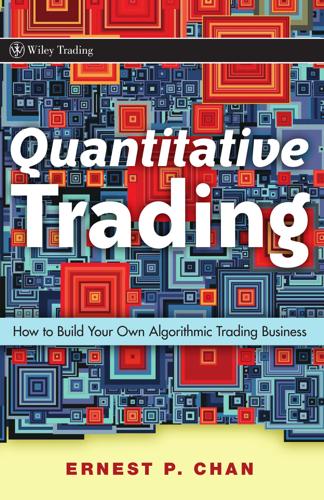
Quantitative Trading: How to Build Your Own Algorithmic Trading Business
by
Ernie Chan
Published 17 Nov 2008
(A T1 line can cost anywhere from $700 to $1,500, whereas a cable/DSL connection is usually under $50. A T1 line transmits information at 1.5Mbps, where bps means “bits per second,” about twice as fast as a cable/DSL connection.) Once you have finally tested your trading strategy and discover that it works in practice very well, it will be time to scale up the business and consider “business continuity planning” so that your trading strategy is resilient to common household disasters such as Internet outage, electricity outage, flooding, and so on. You can install your trading programs on a remote server located in a hosting company; in fact, you can even “collocate” your computers containing your trading programs at the hosting company.
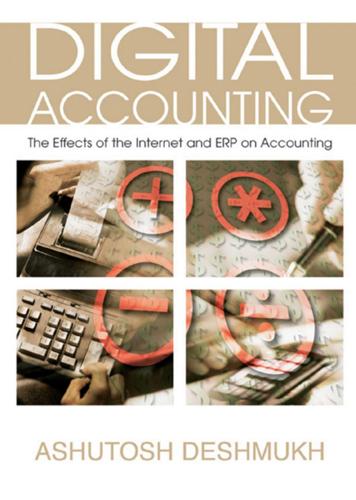
Digital Accounting: The Effects of the Internet and Erp on Accounting
by
Ashutosh Deshmukh
Published 13 Dec 2005
¦ What is the status of the back-up system? ¦ How long does it take to activate back-up systems? ¦ ¦ ¦ ¦ ¦ In case of failure, is the incoming data archived? How it is stored? How can the archived data be accessed? What is the division of responsibilities for data lost in transmission? What is the disaster recovery or business continuity plan? Is a copy available? What kind of back-up systems does the VAN have for its phone lines and power supply? In case of VAN, are audit reports by the third party available? There is no such thing as absolute security, and even security policies are subject to cost benefit analysis. EDI, when properly programmed, runs by itself.
…
VANs have been handling data for financial institutions and governments for a long time and, as such, have developed a high level of security. Generally, problems with VAN security have been few and far between. The primary problems exist in the areas of disruption of networks, manual intervention in the system and legal problems arising out of trading partners’ agreements. The review of business continuity plans, organizational security policies and trading partners’ agreements should cover these critical areas. Benefits and Costs of EDI EDI replaces paper via electronic transactions, thereby changing the nature of the workflows. The implementation of EDI takes multiple years, and significant benefits start flowing only after several years.
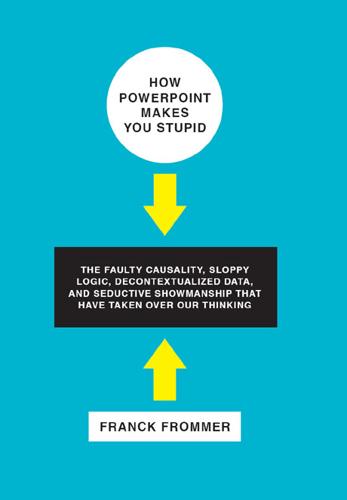
How PowerPoint Makes You Stupid
by
Franck Frommer
Published 6 Oct 2010
In the first months of 2009, the public health authorities of many Western countries began to broadcast warnings about a particularly virulent and threatening flu virus, H1N1. As a result, with the help of a press campaign, real anxiety gripped public opinion and spread to many institutions. Major international companies implemented business continuity plans (BCP), procedures enabling them to continue operations and to “provide the same service to their clients in case of a major disaster,” specifically an epidemic. At meetings of BCP committees in companies around the world, PowerPoint presentations proliferated, describing “new threats of infection,” “flu types,” “the flu pandemic,” “swine flu,” “Mexican flu,” and so on.12 The presentation analyzed here was given in companies during the first quarter of 2009 by a major French hospital establishment.

Behind the cloud: the untold story of how Salesforce.com went from idea to billion-dollar company--and revolutionized an industry
by
Marc Benioff
and
Carlye Adler
Published 19 Nov 2009
In addition, our real estate and facilities team began to take a more strategic approach to managing our growth in the real estate market, gradually transitioning us away from being overly concentrated in San Francisco and implementing cost-saving approaches, such as the ‘‘hoteling’’ of office space, in which there are fewer work spaces than employees—a practical adaptation to the flexible and highly mobile nature of the workforce. Finally, we began to focus on a broad assessment of enterprise risks and on measures to mitigate such risks, including the development of business continuity plans. This overall development of our corporate infrastructure has been one of the keys to our success and our ability to grow rapidly. Of course, all the changes did not necessarily happen naturally. Employees, especially those who had been here for some time, often wanted to do things the old way.

Cybersecurity: What Everyone Needs to Know
by
P. W. Singer
and
Allan Friedman
Published 3 Jan 2014
There are three elements behind the concept. One is the importance of building in “the intentional capacity to work under degraded conditions.” Beyond that, resilient systems must also recover quickly, and, finally, learn lessons to deal better with future threats. For decades, most major corporations have had business continuity plans for fires or natural disasters, while the electronics industry has measured what it thinks of as fault tolerance, and the communications industry has talked about reliability and redundancy in its operations. All of these fit into the idea of resilience, but most assume some natural disaster, accident, failure, or crisis rather than deliberate attack.

Hot: Living Through the Next Fifty Years on Earth
by
Mark Hertsgaard
Published 15 Jan 2011
He said, 'We're recycling, and we're looking at improving our energy efficiency.' I thought to myself, 'Oh, my, he really didn't get it at all. This is going to be a struggle.' "Most businesses aren't prepared for current extreme weather, much less what climate change is going to throw at them," Williams added. "They don't have business continuity plans for keeping their insurance in place, for making sure their records are backed up off-site regularly. What would the implications be of cutoffs of water and electricity supplies? Most businesses would go completely to pieces." Nevertheless, the British government, through UKCIP, is continuing to work the problem, trying to help business leaders realize that adaptation is in their own self-interest.
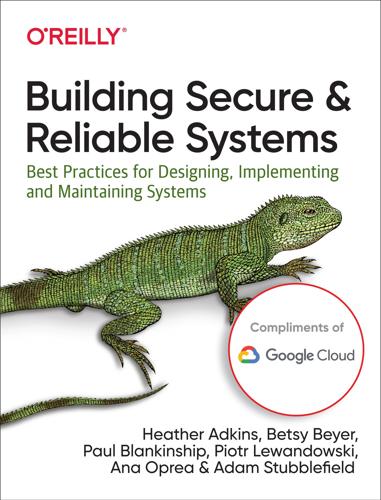
Building Secure and Reliable Systems: Best Practices for Designing, Implementing, and Maintaining Systems
by
Heather Adkins
,
Betsy Beyer
,
Paul Blankinship
,
Ana Oprea
,
Piotr Lewandowski
and
Adam Stubblefield
Published 29 Mar 2020
For many systems, you’ll need to document the technical procedures for mitigating threats, audit the controls regularly (for example, quarterly or annually) to ensure they’re still being implemented, and provide a list of fixes to engineers to correct any weaknesses you identify. Organizations just beginning their IR planning may want to investigate certifications around disaster recovery and business continuity planning for inspiration. Auditing Automated Systems You should audit all critical systems and dependent systems—including backup systems, logging systems, software updaters, alert generators, and communication systems—to make sure they’re operating correctly. A full audit should ensure the following: The backup system is operating correctly.

Four Battlegrounds
by
Paul Scharre
Published 18 Jan 2023
Any such decisions should reflect an international rules-based approach and be supported by evidence. Hikvision is a socially-responsible company. Our mission is to keep people, organizations, and property safe and secure. We are proud that our company is trusted in Europe and we will continue to invest in Europe’s security. We are confident in our business continuity plan that ensures the sustainability of our global supply chain and we have the capability to continuously provide quality products to our valued partners and customers in Europe.” (“Hikvision Europe’s statement regarding the U.S. Commerce Department’s decision,” Hikvision, n.d., https://www.hikvision.com/europe/newsroom/latest-news/2019/hikvision-europe-s-statement-regarding-the-u-s--commerce-departm/.)
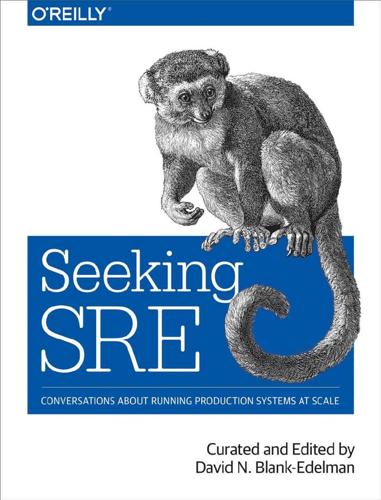
Seeking SRE: Conversations About Running Production Systems at Scale
by
David N. Blank-Edelman
Published 16 Sep 2018
Sample Implementation Roadmap After you have established and funded your team, here are some sample activities for starting with a single product: Quarter 1 Plan overall dashboard Decide on availability monitoring and error monitoring tools Decide on incident management tools Decide on customer-facing status site Identify on-call rotation plan Reduce noise from any existing monitoring tools in place (N/A if no monitoring currently in place) Define the SLOs that you want to monitor Investigate Continuous Improvement/Continuous Deployment tools Implement 12×5 on-call rotation Quarter 2 Build/go live with dashboard Implement availability monitoring tool in production environments Implement 18×5 on-call rotation Standardize environments configurations Autodeploy to environments Self-service deploy of production systems via user interface Implement error monitoring across all environments Monitor and manage error budgets — coordinate with product marketing teams Integrate customer-facing status site to monitoring and internal chat (Slack, Stride, etc.) Quarter 3 Conduct Disaster Recovery/Business Continuity Planning test (make sure to document and test Recovery Time Objectives and Recovery Point Objectives) Experiment with container management and container orchestration (as products become more complex with microservices, containers will be important to understand as a delivery vehicle) Research technologies and prepare for microservice deployments by piloting test application deployments Confirm the environment has met resiliency and high-availability goals for key infrastructure components Formalize sign-off in product development life cycle process as described in Figure 8-4 Quarter 4 Investigate and test tools for predictive analytics from logging analysis Implement 24/7 on-call rotation Closing Thoughts Good luck on introducing SRE into your enterprise.
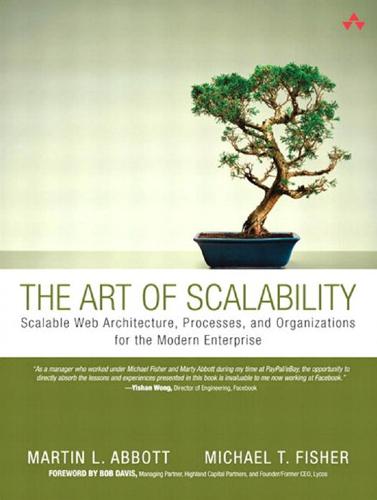
The Art of Scalability: Scalable Web Architecture, Processes, and Organizations for the Modern Enterprise
by
Martin L. Abbott
and
Michael T. Fisher
Published 1 Dec 2009
Instead, we want to reinforce the need for long-term data center planning as part of your engineering team efforts. We will also highlight some approaches that we hope will be meaningful to reduce your overall costs as you start to implement multiple data centers and mitigate your business risks with disaster recovery and business continuity plans. We will also cover at a high level some of the drivers of data center costs and constraints. Data Center Costs and Constraints In the last 15 years, something in data centers changed so slowly that few if any of us caught on until it was just too late. This slow and steady movement should have been 483 484 C HAPTER 32 P LANNING D ATA C ENTERS obvious to us all as the data was right under our noses if we had only bothered to look at it.